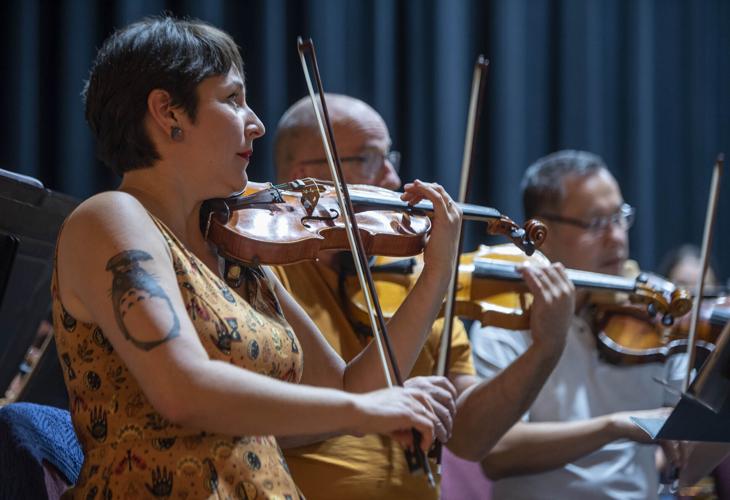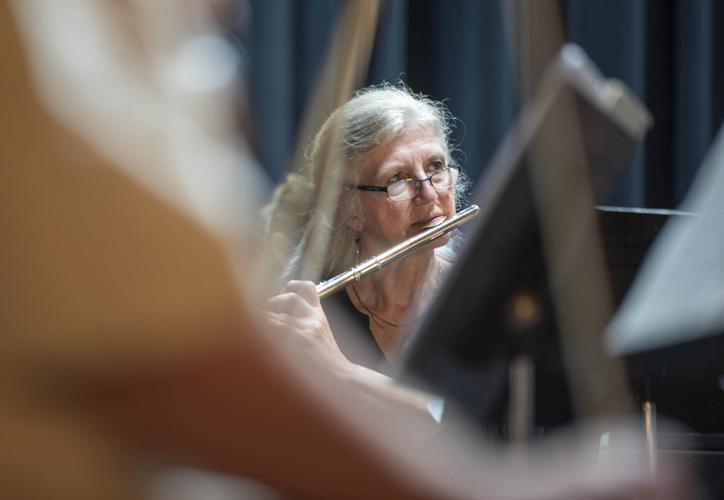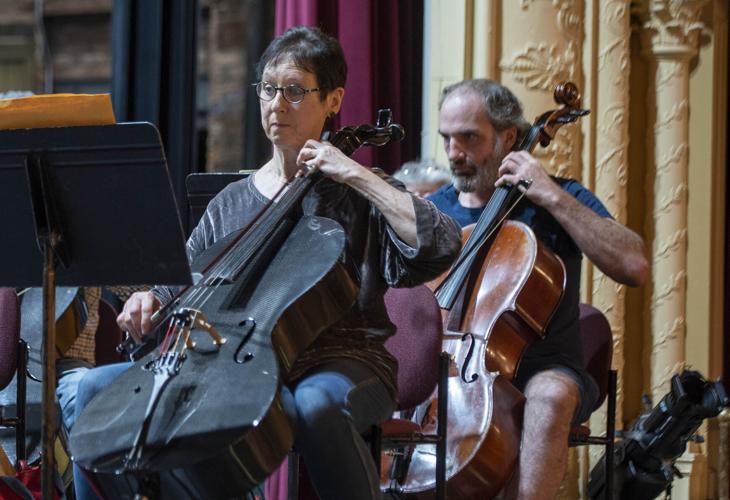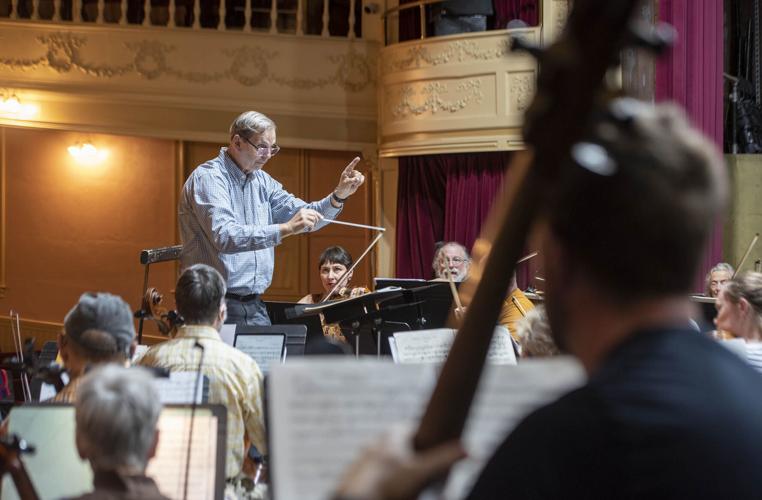To open its 65th season, the Vermont Philharmonic is embracing DEI — diversity, equity and inclusion — with Dvorak.
“We are going to take pieces that should be heard onto our repertoire — pieces that may have been ignored, composers who may have been ignored, but they have something to say, and I will be adding them to our programs,” explains Lou Kosma, the Philharmonic’s music director since 1999.
“Still, I am not giving up the canon of classical music.”
In fact, “Connections Across the Centuries,” will feature Dvorak’s “New World” Symphony No. 9, which reflects American voices not often heard in the traditional classical repertoire. Kosma will conduct music of Joseph Bologne, Chevalier de Saint-Georges and Florence Price, at 7:30 p.m. Saturday, Oct. 21, at the Highland Center for the Arts in Greensboro, and 2 p.m. Sunday, Oct. 22, at the Barre Opera House.
The program will open with music by the first classical composer of African descent who reached stardom throughout Europe, and was dubbed by Marie Antoinette as Chevalier de Saint-Georges. Joseph Bologne (1745-99) wrote his Symphony No. 2 in D Major in 1779. Born of mixed race in Guadeloupe in the French West Indies, he grew up and was educated in France.
“I hate the term ‘Black Mozart’ so I don’t use it,” Kosma said. “I think he’s given that name because he’s in the style of Mozart. His mentor was (Jean-François) Gossec, a friend of Mozart, and he conducted Paris premieres of Haydn symphonies, so he knew that style very, very well — and that’s the style of music that we hear.
“I like it because it’s a lovely piece. It’s in a French style. It’s a fun piece,” Kosma said. “He was not only a great violinist, he was a champion fencer.”
“Florence Price is actually a very interesting composer,” Kosma said the African-American woman. “She actually, in 1932, won a prize and her first symphony was played by the Chicago Symphony. That was really, really major.”
Price (1887-1953) wrote “Ethiopia’s Shadow in America,” which the Philharmonic will perform, 150 years after the Saint-Georges symphony. The three colorful movements depict “The Arrival of the Negro in America when First Brought Here as a Slave,” “His Resignation and Faith” and “His Adaptation — a Fusion of his Native and Acquired Impulses.”
Price, a graduate of the New England Conservatory in 1906, was underappreciated during her lifetime and for nearly 70 years after her death. It was only in 2009 that many of her more than 300 compositions were discovered in her abandoned summer home and are beginning to get the attention they deserve.
“‘Ethiopia’s Shadow’ was only premiered in 2015,” Kosma said. “What I noticed was ‘Resignation and Faith’ has a theme that reminds me very much of ‘Coming Home’ — some people say ‘Going Home’ — (the famous English horn solo) in the ‘New World’ Symphony. I really do feel there’s a connection there — a big connection.”
Antonin Dvorak’s Symphony No. 9 in E minor, Op. 95 “From the New World” closes the program. One of the most beloved of all symphonies, written during his three-year stay in the United States, it was premiered at Carnegie Hall in 1893.
“Dvorak’s music was well known when he was brought over here to run the National Conservatory of Music in New York City, for a staggering annual salary of $15,000 (more than $500,000 in today’s dollars),” Kosma said. “He admired African American spirituals and said that African American and Native American music could provide the foundation for a unique school of American music.”
Dvorak actually uses elements of African American spirituals and native American music in this symphony. According to legend, Neil Armstrong walked on the moon to a recording of this Dvorak’s symphony during the historic Apollo 11 mission on June 20, 1969.
“Dvorak was a great, great, great composer,” Kosma said.
The Vermont Philharmonic brings together professional and talented amateur instrumentalists from throughout Vermont. It is Vermont’s oldest community orchestra, founded in 1959 by Jon Borowicz, emeritus professor of music at Norwich University. Since 1993, the Vermont Philharmonic’s home base has been the Barre Opera House.
Kosma said, “As with great conductors, too, the work is done in the rehearsals but the benefits are at the concerts.”
Vermont Philharmonic The Vermont Philharmonic, conducted by Music Director Lou Kosma, presents “Connections Across the Centuries,” featuring Dvorak’s “New World” Symphony No. 9, plus music of Joseph Bologne, Chevalier de Saint-Georges, and Florence Price: — Saturday, Oct. 21: Greensboro — Highland Center for the Arts, 2875 Hardwick St., 7:30 p.m. — Sunday, Oct. 22: Barre — Barre Opera House, 6 N. Main St., 2 p.m. Tickets are $20, $15 for seniors, $5 for students, at the door or online at www.vermontphilharmonic.com
jim.lowe@timesargus.com / jim.lowe@rutlandherald.com
Vermont Philharmonic The Vermont Philharmonic, conducted by Music Director Lou Kosma, presents “Connections Across the Centuries,” featuring Dvorak’s “New World” Symphony No. 9, plus music of Joseph Bologne, Chevalier de Saint-Georges, and Florence Price: — Saturday, Oct. 21: Greensboro — Highland Center for the Arts, 2875 Hardwick St., 7:30 p.m. — Sunday, Oct. 22: Barre — Barre Opera House, 6 N. Main St., 2 p.m. Tickets are $20, $15 for seniors, $5 for students, at the door or online at www.vermontphilharmonic.com






